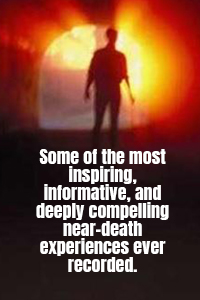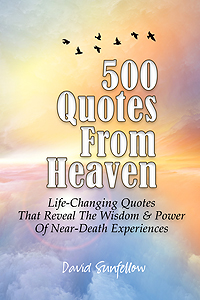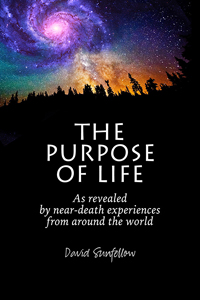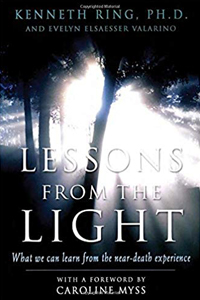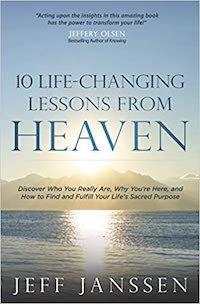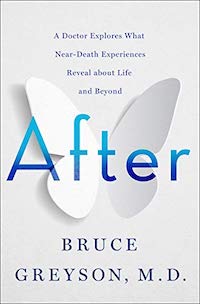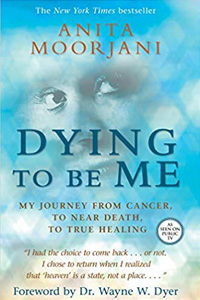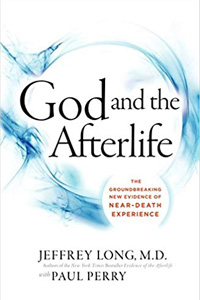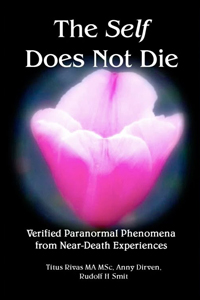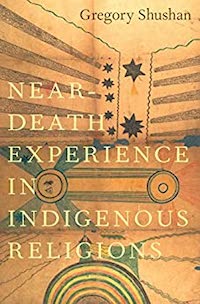![]()

…………..
Michael Holden is a writer working for both print and screen. He has been a columnist and contributor for The Guardian & other newspapers, is a contributing editor for Esquire in the UK and has rewritten screenplays for major Hollywood productions and independent films. The original version of this article was published by Esquire in 2018. Michael’s website is located here.
…………..
The Other Side Of Paradise: How I Left A Buddhist Retreat In Handcuffs
By Michael Holden
The police stayed calm and the Buddhists were calmer, but by then there wasn’t much anyone could do. In the hours previously, I had come to believe, simultaneously and sequentially, that I was: dead, alive, omniscient, immortal, non-existent, gay, straight, telepathic, a flower, a pulse of pure energy and a nuclear bomb. And that was the good part, relatively speaking. By the time I was handcuffed and led to an ambulance, my troubles, or at least this episode among them, were just underway.
It is not the conclusion one pictures to a meditation retreat: a shackled, ranting, middle-aged man being taken to hospital under police supervision. Ideas like mindfulness and meditation are sold largely by images of good-looking people and unfurrowed brows. Yet it wasn’t upbeat marketing that led me to a 10-day, silent sanctuary on the Welsh borders, but a man on fire.
Forty years before flunking out of Buddhism in chains, I chanced upon Malcolm Browne’s 1963 photograph of Thich Quang Duc, a monk, sat, burning to death by his own hand in an act of protest at a crossroads in Saigon, South Vietnam. “As he burned he never moved a muscle,” said The New York Times journalist David Halberstam, a witness to it, “never uttered a sound, his outward composure in sharp contrast to the wailing people around him.”
I was young when I found the horrific image but I saw in it, also, proof that there was another way to be beyond than the swirling, self-sustaining system of hopes and regrets already established in my restless brain.
Decades later, a collision of life crises (marital, professional, medical and familial) and a kind of emotional insurgency — a relentless sense that there was something beyond or beneath all this — propelled me first into meditation, and then to the retreat where, if enlightenment were not forthcoming, at least I would have spent some time without my phone. What could go wrong?
A simple, contemporary definition of meditation is “a family of self-regulation practices that focus on training attention and awareness in order to bring mental processes under greater voluntary control.” Written references date back to 600 BC. Techniques and traditions vary, but the most prominent associations are with Buddhist philosophy, and there are few spiritual schools of thought or religions which do not accommodate some practice which might be described as meditative.
Meditation’s modern offspring, “mindfulness”, has its roots (as a phrase) in the 20th century. Where one begins and the other ends is the subject of much debate. Suffice to say whether you’re sitting silently in a monastery or staring at a smartphone in your sister’s spare room, if you are taking time out to observe your thought patterns and breathe in a conscious manner, one or both terms have you covered.
What began in antiquity abided and bloomed into a billion-dollar industry in the US alone. Be it through ashrams or apps — there are over 1,300 now, and the Headspace app has been downloaded close to 35m times — meditation has been touted as a panacea for everything from childhood trauma to palliative care. There is plenty of evidence, empirical and anecdotal, that in many of these areas it does have positive results. So, I read some books, looked online, sat, and watched what my mind did.
From 15 minutes of sitting a day I felt subtly but tangibly changed. “Mental processes” were definitely “under greater voluntarily control”. I was no Buddha, but I was demonstrably less volatile. I had a taste for it and was soon seeking ways to do more. Much more. I booked the retreat. The perceptive among you will note this is precisely the kind of desirous behaviour pattern that meditation is often deployed to break, but Nirvana wasn’t built in a day.
Deep in the Herefordshire countryside at the tail end of June, the retreat I attended felt and looked like the apex of serenity. The discipline chosen by me and around 150 other attendees — an idealistic mix of ages, races and gender — is known as Vipassanā which, they will tell you, means “seeing things as they really are”. We decamped cheerfully from coaches and cars, gave up our phones, agreed not to speak for a week-and-a-half and wandered off to billets on the sprawling former farm. The atmosphere prior to the commencement of silence (you can talk with the retreat leaders at allotted times, if need be) was one of warm, collective anticipation, somewhere between a school trip and a festival.
At 4am the next day, we were awoken by a gong. And so began an 11-hour daily programme of meditation, punctuated occasionally by vegetarian food (until midday, after which it was fruit only). In the evenings, we gathered to hear the teachings of the course’s founder, Satya Narayan Goenka, an avuncular but deceased Burmese/Indian businessman and Buddhist scholar whose posthumous addresses were screened nightly. They came to provide a kind of group release; we laughed, and not just as counterpoint to the silence. Like other spiritual teachers, and some stand-ups, Goenka walked a fine line between practical philosophical insight and observational comedy.
After several days of silence, sermons, slender rations and pre-dawn starts, something significant shifted inside me. The inner dialogue ceased, replaced by an outbreak of peace so fundamental as to transcend what I could or can still share with language. And I could see and sense, even if I couldn’t speak to the others, that this was happening among them too.
The power of such a revelation, that everything you might have hitherto insisted you consisted of was instead an illusory construct which can, through self-examination, vanish and be replaced by something best described as love… that can take some getting used to. The implications for your “self” (by this point a minority shareholder in that which you perceive yourself to be) and society (all conflict, and thus much of history, being by these terms an avoidable mistake) are considerable.
But before I could assimilate this, or perhaps because I couldn’t, the limitless love became a gruelling fear, mutating into the conviction that I, personally, could bring about the end of everything, since the macrocosm of our universe seemed so clearly and precariously contained within the microcosm of my being. Say this like you mean it, act stubbornly on your pronouncements, and they will come for you with handcuffs too.
I had come to believe, simultaneously and sequentially, that I was: dead, alive, omniscient, immortal, non-existent, gay, straight, telepathic, a flower, a pulse of pure energy and a nuclear bomb. And that was the good part, relatively speaking
Psychosis is, I suspect, a little like falling in or out of love: something on the cusp of the personal and the universal that each of us experiences differently. Between the ambulance ride and the oblivion of sedation, I was held in a room with two police officers at the local A&E. They looked on reasonably benignly as I did my best to convey what I was feeling which, among other stark hallucinations and a roiling, primal fear, was that I was dying and being reborn every 90 seconds or so. I can’t really describe what that is “like” since the one comparable event is largely unremembered and the other unknowable, but it felt real and it was gruelling, and, in the end, I was begging them to knock me out.
All this was much to reflect on as I recovered (to some extent) in a psychiatric hospital over the next 48 hours. How had I fallen so hard and wide of the mark of meditation, of something so seemingly benign? Others on the retreat had become emotional, openly weeping (as I had done) but no one else had begged to stop, only to refuse to leave and then been forcibly removed.
What I did know, was that I had been “here” before. And not in a past life. In the mid-Nineties, in my mid-twenties when I was working as a journalist in London, I took enough recreational drugs to keep me awake for nine days, at the end of which I was psychotic, sectioned, sedated and held in hospital for four months. That might sound dramatic, but I did it to myself and for all I know the treatment (including drugs since withdrawn from use) and the incarceration saved my life. Certainly, it shaped it.
The advantage of this, insofar as it had one, was that when my mind disintegrated for the second time, I had some sense of what I was in for, and I knew I could get back. Maybe. Even naked terror takes the occasional break, and the sense in those moments that there is a way out, is in some ways all you need to carry on.
This time I was in and out of hospital in one weekend. With a month’s worth of anti-psychotic medication, I had some decisions to make. It seemed clear to me that if I could reach such an altered state through intoxication and insomnia once, and then do it again 20 years later through silence and concentration, then that state was “real” and not a figment of my imagination or the symptom of an illness per se.
I didn’t want to stay medicated (my previous stint had lasted a decade), and I understood that the rules of the retreat meant that as I had left before the end, I could not go back. Vipassanā makes it clear in its literature regarding “serious mental disorders” that: “Our capacity as a non-professional volunteer organisation makes it impossible to properly care for people with these backgrounds.”
I had been screened out at the initial application because of my history and then, after going into detail, accepted, as my prior issues were so long ago. I was thrilled to be admitted and delusional when I left, but barring some emails and a follow-up phone call, early exits from Vipassanā are final. Tossed from what had seemed briefly to be heaven, I went back to my elderly folks, weaned myself off the meds, and got thoroughly depressed.
In the weeks that followed, I began to google “meditation”, “mental illness”, “mania” (as my ex-wife pointed out, I ought really to have done this beforehand). But it was then I found that far from being alone in this, I was one of many who had learned the hard way that at a certain level, for some practitioners, something like psychosis is part of the meditative programme. And that not everyone who goes through that survives.
Dr Daniel Ingram is a recently retired, frontline ER physician who worked in one of America’s largest trauma centres in Huntsville, Alabama. He left trauma medicine in his late forties, he says, since, “you see some extremely bad stuff in high quantities, it starts to take its toll… it is in some ways a younger person’s game.” Ingram is also the author of Mastering the Core Teachings of the Buddha, a seminal and substantial text which, alongside a busy online forum which he moderates, has become a resource for those for whom the vogue for meditation revealed the void. One of his contentions is that despite millennia of existing wisdom about what can and will happen when you close your eyes and follow your breath for long enough, modern versions of these practices are often mis-sold.
“This dream of peace and wellbeing, happiness and contentment, mental health and emotional clarity,” says Ingram, “[doesn’t recognise] that some reasonable proportion of people will also be catapulted into full-on, deep-end spiritual development by crossing what the Buddhist tradition I come from calls the ‘Arising and Passing Away’ stage. And then they’re off and running in this whole different end of development, which, as you now know, is quite a different thing than what most people signed up for.”
An irony of finding Ingram’s work was that my own “madness”, the singularity of which I was both scared and perversely proud of, was made familiar, if not quite mundane. In a broad sense, he has heard it all before.
“You crossed the ‘Arising and Passing’ and hit the standard ‘Dark Night’ stages, just as one would predict,” he explains. When I tell him about the birth-and-death cycling, which I had taken to be particularly troubling and profound, he just says, “Nice”. These challenging but navigable “stages of insight”, he explains, are as old as meditation itself. They have, however, been largely omitted from the modern conversation.
The Vipassanā retreat I visited is part of a global, free-to-attend franchise run on the guidelines established by Goenka. The regime there, says Ingram, is, “absolutely perfect for getting people across the ‘Arising and Passing Away’, [but] not normalising the next stages.” These stages are often traumatic, known colloquially and historically as the “Dark Night”, and bear little or no phenomenological difference to the medical classification of mental illnesses, particularly bipolar disorder. According to Ingram, with the right expectations and support, the stages are temporary. Without it, “people crash out into the world a total wreck. I’ve had a hundred of these calls, more, I couldn’t possibly count them,” he says. “If you go online, the number of reports of this happening is thousands. So many I’ve lost track of them all.”
Three months before I entered Vipassanā, Megan Vogt, a 25-year-old American woman left a near-identical centre in the US “incoherent, suicidal and in psychosis,” according to reports in the local news. Ten weeks after she left the retreat she took her own life. Unlike me, Vogt had no history of mental illness or drug use. She would not have presented any issue at the application stage or known what hit her on the retreat. Nor did her family, or, it seems, the medical professionals to whom she was referred.
A spokesman for the Vipassanā Trust, which manages the network of retreats in the Goenka tradition, acknowledged that Vogt’s case was “horrendous, tragic and traumatic” but that such outcomes were “exceptionally rare”. He told me 1.2m new students have used their retreats since 2001, and they have accepted more than 200,000 since 2016. He also said that this case, and any other “serious incident”, was subject to an “incident review”, and that the Vipassanā Trust’s objective in these matters was to “check ourselves that everything is being done, and if not then make some changes and tighten it up”. He added that any student, regardless of how they exit or whether they finish the programme, is welcome to contact them for support or even to reapply.
When I asked if the Vipassanā Trust felt that meditation in its tradition could in any way cause symptoms that might be termed as mental illness, the answer was an unequivocal, “No.”
And as to whether anyone exhibiting such symptoms must have prior disposition? “Yes. Absolutely.” So something like psychosis is not actually a desirous outcome for the meditative process?
“That [psychosis] is absolutely nothing to do with Vipassanā in our tradition. That is beyond the bounds and irresponsible. Meditation and mindfulness have got to be properly done, we’ve got to have procedures set up like we do. It doesn’t mean we are perfect. We discuss things that were tricky: ‘Did I make a mistake?’ ‘What was the feedback from the student, from the course managers?’ We learn and we get better.”
With the help of technologies such as functional Magnetic Resonance Imaging (fMRI) and electroencephalograms, Professor Willoughby Britton has observed many meditating brains. She is the co-director of the clinical and affective neuroscience laboratory at Brown University in Providence, Rhode Island, and also one of the authors of The Varieties of Contemplative Experience (VCE), a major qualitative study of challenges faced in meditation.
“I was working at an inpatient psychiatric hospital, and during that year there were two meditators that came off retreats psychotic and needed to be hospitalised. Two in a year seemed a lot to me, so I asked the meditation teachers I knew, how often does this happen? They looked kind of sheepish and were like, ‘It’s not that uncommon’,” Britton recalls. “So, I got the sense there was a lot that was not being talked about. That was the beginnings of the VCE study.”
Britton spent a decade on the study, published last year. “More than 60 per cent of the people reporting their own difficulties were actually teachers themselves,” she explains. “So, this isn’t just people who don’t know what they are doing, or people who are showing up who have mental illnesses. These were the teachers.” Since Britton’s project went public, she has been beset with people seeking guidance. “I’ve had over 500 people contact me, I get emails, Facebook… referrals from meditation centres and meditation teachers who feel like they’re not sure what to do. I work with people who have difficulties and run a support group every week; it covers eight different time zones and we all Skype in from different countries. That’s also been a big part of what’s informing not just the research study but also my ongoing work with people who are actively in crisis… they don’t know where else to go.”
How had I fallen so hard and wide of the mark of meditation, of something so seemingly benign? Others on the retreat had become emotional, openly weeping, but no one else had begged to stop, only to refuse to leave and then been forcibly removed.
Britton confirms what Daniel Ingram has observed: you don’t need to spend days on a retreat for this to happen. “I am,” she says, “seeing people who get into trouble using apps.” (Headspace says its customer services team, “is prepared to recommend appropriate resources to our members should the need arise.”) How does Britton think her work might make things more manageable for people who find themselves in crisis in the years to come?
“A general awareness that these things happen and what they are; everyone should know that, not just providers, but people who are considering meditation. Right now, they just have such an overblown idea of what it can do for them, and that it’s good for everything with no side effects; and that just needs to be more mature and more realistic,” she says. “I will know that things are better when people stop calling me. That hasn’t happened yet but I’m hoping that as we train not just meditation teachers but also clinicians, there will be a whole new species of clinician that can help people navigate this territory.”
The million-dollar question here, perhaps literally, is where what we think of as mental illness ends and what Daniel called “deep-end spiritual development” begins. Britton has spoken previously about the dangers of “pathologising the spiritual and romanticising the pathological”. The issues are as old as the practices, and, like the neural processes behind them, nothing we can answer definitively now.
It is clear that meditative practice, as it relates to mental illness, cuts both ways. It can help you out as much as it can pull you in. At Goodmayes psychiatric hospital in Essex, consultant psychiatrist Russell Razzaque works both sides of the street, offering medication and meditation to those in his care.
It is a blisteringly hot day when we meet at the secure unit where he works. A patient is playing Lionel Richie’s “Hello” loudly and repeatedly over their phone in a courtyard below us. Razzaque offers to close the window but speaks with a clear, quiet intensity that renders any acoustic countermeasures unnecessary. “I did a mindfulness group on the secure ward, where young men come because they’ve been violent. The story tends to be that they’ve been acutely psychotic which has led to that [violence], and that gets them to me. We ran the group for the patients and staff together, and those who were finding things difficult, they didn’t come because it was too much for them.
“I think it’s always very important for it to be voluntary. You could never say, ‘This is one-size-fits-all, everybody should have this at some stage’. I’ve never prescribed it to anybody. But we had the group every day for half an hour, and anyone who wanted to could drop in. Sometimes people would come once and then not come back, other times people would come regularly and say, ‘This is really making a difference’.” So, it works then? “But there needs to be a lot of flexibility.”
It seems surprising that a secure NHS mental health unit has a more flexible approach than some retreats. When I outline the regime at Vipassanā, Dr Razzaque responds, “That is the hardest-core of all the ones I’ve seen. I have never been on one and I don’t think I would, it sounds pretty scary. Very long sittings, lack of eating. If I was living in a monastery for five years, then maybe at the end of that, that might be good for me. So, yes, there certainly are some that are very hard, and for some people to go through that, fine. But personally, as I said, it isn’t for me.”
Alongside Dr Ingram’s work and Professor Britton’s studies, Dr Razzaque’s book Breaking Down is Waking Up was instrumental to my recovery. It is a remarkable work, referencing everything from poetry to quantum theory in its assessment of the relationship between mind, matter and what might be defined as madness. It also contains the most relatable assessments of the “process” of psychosis I have ever heard.
“The truth,” Razzaque says, “is that life is a lot more mysterious than we give it credit for. Ninety-five per cent of the known universe is utterly unknown and unknowable to us. This isn’t propagated in public discourse enough, because of which people are led to this materialist, reductionist idea of reality which leaves them feeling bereft. It leaves them feeling dead inside and as a result you get more people having breakdowns thinking, ‘What is the point of it all?’ I do think that’s one of the fundamental reasons why mental health breakdown rates are going up… If you’ve been through those severe experiences you’ve been further out than the rest of us and that’s something beneficial for us. In some ancient communities that was a qualification for being a shaman or a wise person.”
In a crazed world, perhaps the mentally ill and those driven to practices whose outcomes resemble madness are just our first responders.
“Society needs this [conversation],” Razzaque believes. “I think we can be saved as a species… if we open those doors up, have those [outlying psychological] experiences be heard more. It’s not just like saying, ‘Open the hospital doors and let everybody out’. That’s never going to be the case. It’s a thin line, sometimes it will be [hospitalisation], other times it’s just a case of getting families together to try and understand what the individual’s experience is and working it through.”
It has taken me two decades to investigate what had happened to me, and I am still putting it together. Assembling these sentences is itself a part of that. What happened on the retreat and before has become a bridge to understand, having come apart, how I and maybe all of us, are put together. I feel obliged to discuss it in case there is some wisdom there, which others might recognise or access and explore, ideally in a less drastic and dangerous fashion. I feel fine now, mostly. I can get back to that place beyond words, sometimes. I’m not sure I would want to go through it all again to get there, but I wouldn’t have it any other way.
“What has always been true,” says Dr Razzaque, “is that when we’re talking about mental health problems and emotional problems, we’re effectively talking about the very nature of consciousness. And nobody really knows what consciousness is. Until we can define the base of what we’re talking about, how can we define an abnormality of consciousness? I don’t think you’ll find a definition of consciousness that’s indisputable, that works. I firmly believe our brains aren’t big enough to understand the firmament we’re in. A fish in water doesn’t really know it’s in water.”
Until, perhaps, it jumps.


